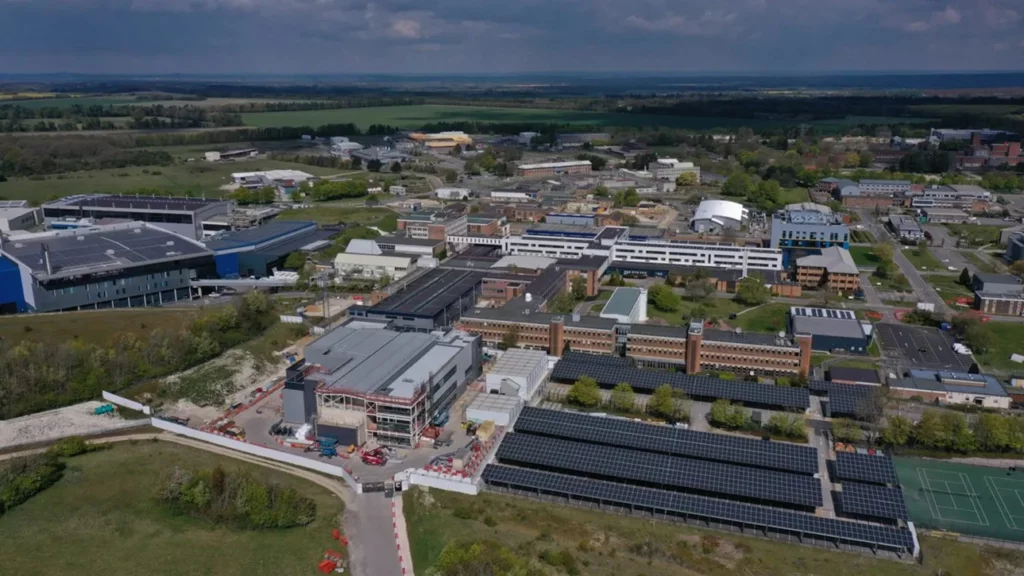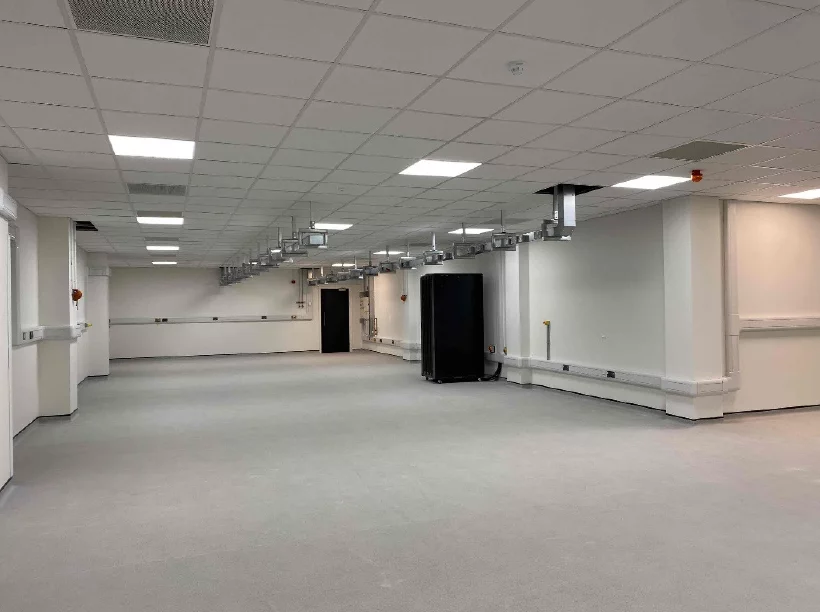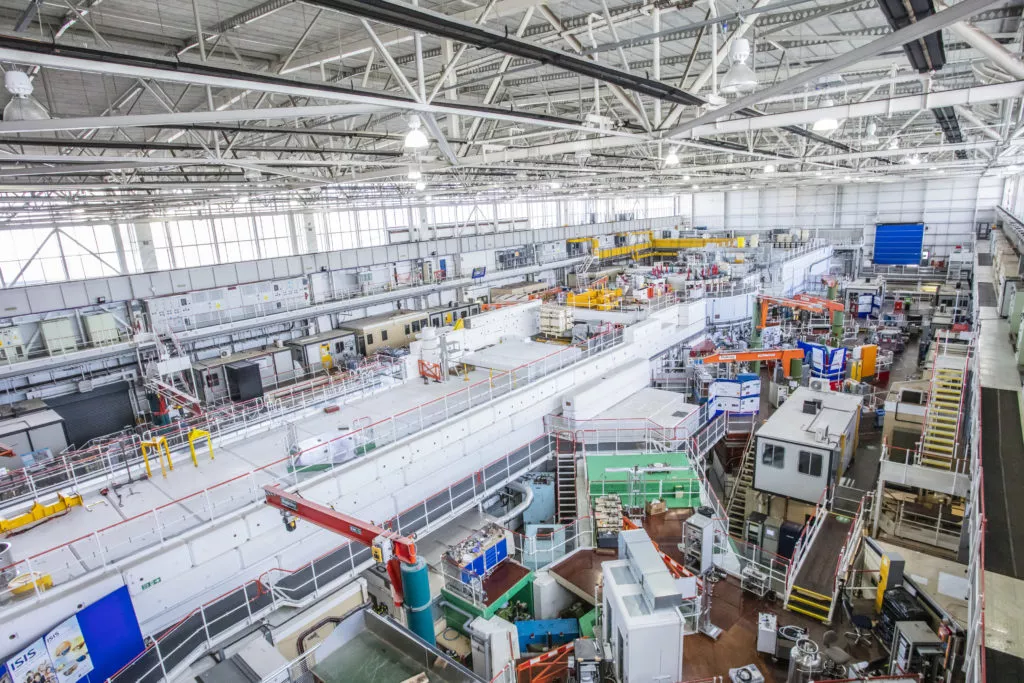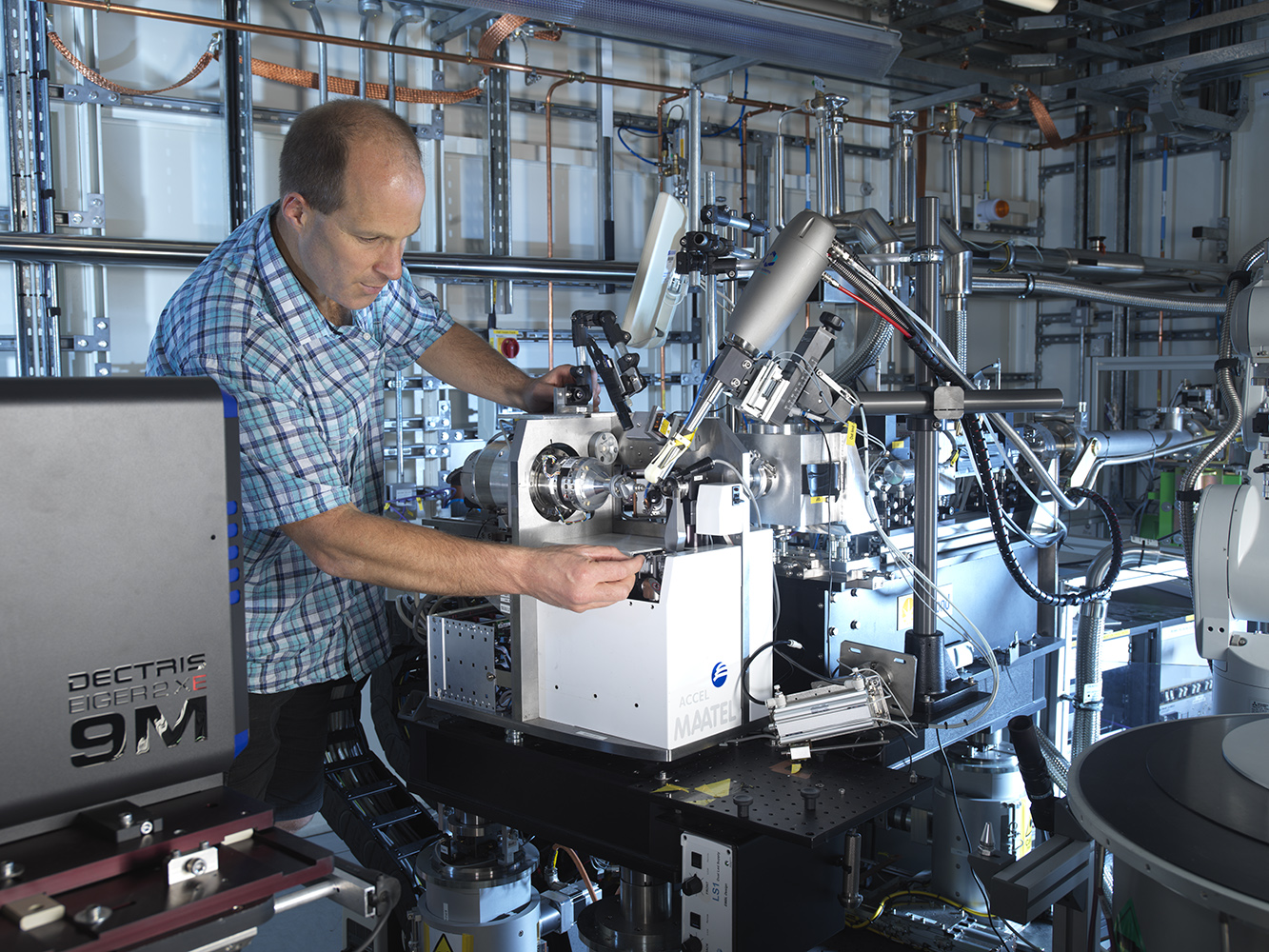
Extreme Photonics Applications Centre (EPAC)
Extreme Photonics Applications Centre (EPAC) is a new Facility of ultra-bright lasers is coming to Rutherford Appleton Laboratory at Harwell Campus.
The Extreme Photonics Applications Centre (EPAC) will drive plasma-based accelerators using lasers, producing advanced X-ray sources for imaging in industrial, biological and defence and security environments – providing a boost to UK innovation.
What is it?
Set to open its doors in 2026, the Central Laser Facility’s (CLF’s) EPAC will be a unique international facility that will be able to apply its laser-driven plasma accelerators in a multitude of areas. This £82-million facility, funded by UKRI with a £10-million contribution from MoD, was launched in 2020 and furthers the pioneering work of 2018 Physics Nobel Prize-winners Donna Strickland and Gérard Mourou, whose work in developing high-intensity, ultrashort pulses of light beams has transformed several sectors. The vision behind the centre at Harwell is to stimulate a unique ecosystem that brings academia, defence & security, and UK plc together, providing new capabilities for fundamental science and applications including non-destructive tests in advanced manufacturing.
How does it work?
The EPAC building (construction due for completion in early 2022), will house a high-power laser driven by the CLF’s own unique diode-pumping technology. A single flash from the laser is 10,000 times more powerful than the output of the UK national grid, albeit it happens for a very brief period – a hundred-trillionth of a second, to be precise. Focusing this laser to a spot that is smaller than the width of human hair on a target (typically a gas or a solid) will create temperatures hotter than the sun’s core, turning everything at the focus point into plasma-state instantaneously. Along with setting up extreme conditions that are of interest from a fundamental science perspective, the huge electric fields setup in the plasma can accelerate particles to near-light speeds, producing bright X-ray beams on the way.
The X-ray and particle beams generated by EPAC come from a point-like source, which means they can be used for micron-resolution imaging. Since these X-ray beams are partially coherent, they can be used to detect even small changes in material densities. Moreover, since the driving laser is a very short pulse, the X-rays they produce are also pulsed, allowing them to freeze-frame extremely fast-moving objects such as turbo engines and shocks. These properties make the X-ray beams from EPAC ideal for high-resolution imaging in industry- for example, showing up miniscule defects in parts such as aircraft wings, vastly reducing the cost of manufacturing faults. This exciting new facility will have the potential to open-up new territory in scientific research and technological innovation in Britain.
Who Can Use it?
EPAC brings together world-leading, interdisciplinary expertise to deliver cutting-edge science and explore their potential for applications in various sectors. Experiments in EPAC will be a great tool for training PhD students, early career scientists and the next generation of engineers and innovators.
Latest events
-
Photography Workshops for Young People
19th Oct
10:30 – 16:00 | Quad Two, Rutherford Avenue, OX11 0DF
As part of the Light Project and the RSG Earth Photography Exhibition at…
-
RAL Lecture: Accelerating Scientific Discovery with Quantum Computers
8th Oct
14:00 – 15:00 | R22 Pickavance Lecture Theatre and Zoom Webinar
Come along to R22 Pickavance Lecture Theatre or join online to hear from…







